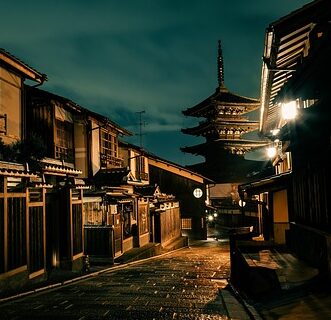
Chapter 3: Myth and Human Life
Myths and Humanity — Harmony Between Prayer and Nature
Japanese myths are not only tales of the gods; they also mirror human life.
For ancient people, gods were not distant beings in the heavens. They were gentle presences in the wind, the rivers, the rice fields, and the moonlight.
The idea that every part of nature holds a spirit lies at the heart of the belief in Yaoyorozu no Kami—the “eight million gods.”
Prayers and festivals were not empty rituals. They were moments of dialogue with nature.
People prayed for good harvests before tilling the soil and for safety before entering the mountains.
Through such acts, humans connected with nature and the divine.
This faith remains the foundation of how we live in harmony with the world today.
The Exchange Between Gods and Humans in the Manyoshu
The Manyoshu, Japan’s oldest poetry anthology, contains many songs of prayer and gratitude to the gods.
Ancient people believed words held spiritual power. Through kotodama—the spirit of words—they voiced their wishes.
Songs about safe journeys or fulfilled love echo with pure devotion.
These verses are not mere literature; they are forms of divine communication.
Through poetry, people shared their hearts with the gods.
In that era, prayer and poetry were one.
It was a time when mythology and daily life flowed seamlessly together.
Life, Death, and Rebirth — Lessons from the Myths
Japanese myths symbolically express the essence of human existence.
The story of Izanagi and Izanami represents the cycle of life, death, and rebirth.
When Izanagi chases Izanami into the underworld, it reflects love, loss, and the human longing to stay connected beyond death.
The word enishi (fateful bond) embodies the unseen threads that tie humans and gods together.
In this worldview, parting or death is not an end but a new beginning.
This gentle view of life and death has been passed down through the myths, expressing Japan’s philosophy of renewal and continuity.
Living Myths — Shrines and Annual Traditions
Hatsumode (New Year visits to shrines), Setsubun, Shichi-Go-San, and seasonal festivals are moments when people reconnect with the gods.
When we bow and clap our hands at a shrine, we are repeating the same gestures our ancestors once made.
Shrine architecture, sacred dances, and the rhythm of norito (ritual prayers) all carry echoes of ancient mythology.
The sound of kagura drums and the gentle ring of bells in the wind awaken the memory of those myths.These are modern forms of prayer.
Even though appearances change, the reverence for the unseen remains deeply rooted.
Myth Lives Within Us
Myths are not just ancient stories. They are memories dwelling in our hearts.
The feelings of awe, prayer, and gratitude toward nature have never faded.
Each time we pause, fold our hands, or gaze at the sky, the Yaoyorozu no Kami are with us.
Myth is not a distant echo from the past.
It is a quiet voice reminding us to live with respect, harmony, and wonder—here and now.



コメントを残す